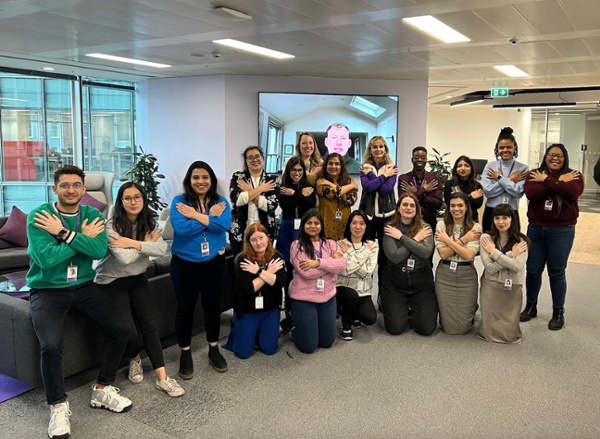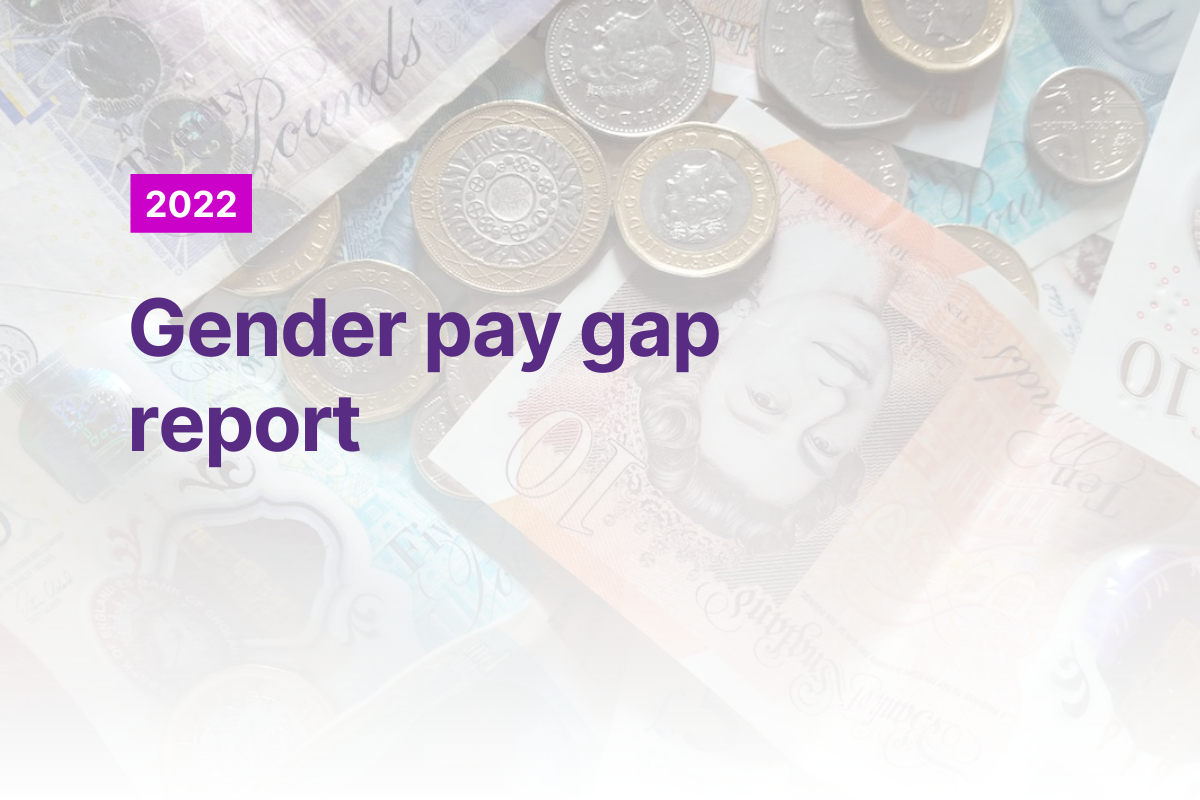In the UK, companies with 250 or more employees must publish their gender pay gap figures taken from a snapshot of the previous year. The gender pay gap is the difference between men's and women's average earnings across a workplace.
We use this to review our support for women at 10x, reflecting on our progress and where we can grow. While the gender pay gap figures only examine men's and women's earnings, we want to create an environment where people of all gender identities feel they belong.
10x’s gender pay gap figures
Our gender pay gap figures are comparable to other fintech companies. However, we don’t want to settle for industry standards that aren’t good enough. We know we can do better and have a strategy to do so.
The following data is based on a snapshot taken on 5 April 2022.
Hourly pay gap (relative to men):
| Mean | 19.0% |
| Median | 13.4% |
Percentage of women and men in each hourly pay quarter:
| Women / Men | |
| Lower Quartile | 39.6 / 60.4 |
| Lower Middle Quartile | 27.5 / 72.5 |
| Upper Middle Quartile | 16.5 / 83.5 |
| Upper Quartile | 17.6 / 82.4 |
The lower quartile represents those who earn the lowest 25% of salaries, the upper quartile represents those on the highest 25% of salaries.
Bonus pay gap*
| Mean (relative to men) | 60.0% |
| Median (relative to men) | 0.0% |
Percentage of women and men who receive a bonus*
| Women | 81.9% |
| Men | 87.3% |
* In April 2022, we didn’t offer performance bonuses, so the bonus gap (60%) relates to recruitment activity, discretionary bonuses, and end of year ‘thank you’ payments.
Our gender pay gap analysis
The gender pay gap is calculated as the difference between the average hourly earnings of men and women as a proportion of men’s average hourly earnings, excluding overtime. It doesn’t measure the difference in pay between men and women for doing the same job.
What it does highlight is underrepresentation within our organization. There are fewer women than men in each quartile. That disparity grows in higher-paid leadership roles, widening the gender pay gap.
We attribute this to the underrepresentation of women across the technology industry in the UK, particularly at leadership levels, and more than 70% of our employees work in our technology teams. However, we want to be part of the positive change happening in the industry. We know we have work to do to remove barriers women face within it.
Our commitment to close the gap
To close the gender pay gap we need to examine our hiring practices, policies, and the support we offer to women internally and in our wider communities. So we are making our position on these areas public to hold ourselves to account and ensure meaningful progress is made.
Hiring
We need to increase the representation of women at every level of the organization. To help us move the dial, we have reviewed all our hiring practices and set ourselves company goals on increasing gender diversity, which our board holds us accountable to.
Our job descriptions are now more inclusive, and we have focused on creating a balanced pipeline of candidates and interview panels. We are currently rolling out objective assessment training to all hiring managers. This training removes bias from the interview process. It uses templated questions and scorecards for all candidates to measure the capabilities required for the role fairly.
Employee networks
Our employee networks continue to play an instrumental role in driving positive change at 10x.
Our Women and Friends network engages everyone in the company to learn how to be better allies through talks and other events. Our Women in Engineering network offers a safe space for women and gender minorities to have challenging conversations in private.
The People and Impact teams work with both networks to listen to issues raised and create meaningful solutions. This year networks have also been given their own budgets, which they can spend on the areas that matter most to them.

Learning & development
We are all on a learning journey and we’re committed to taking our employees on that journey with us.
Since 2022, every 10xer has completed our Being 10x training module. This training included learning about their role within the 10x community and how to be more inclusive in the workplace.
We believe in equity, understanding that underrepresented groups sometimes need additional support to be level on the playing field.
In 2022, women at 10x had the opportunity for mentorship with experienced business leaders through Women on the Wharf. This year, we are creating a bespoke accelerator program, which will support the career development of high-potential women in 10x.
Community
To be part of the wider change happening in the industry, we must look beyond our talent pipelines and employees. We need to nurture the talent of tomorrow. Making a positive impact on society is a core value at 10x. We continue to partner with schools, charities, and organizations to make fintech careers a reality for people of all backgrounds.
Our events, including those in partnership with the charity codebar, have delivered workshops, resume reviews, and talks to women and other underrepresented groups trying to break into the industry. And we will continue to engage disadvantaged young people in our local area through work experience opportunities offered to Pimlico Academy and Future Leaders.

Policies
We have recently reviewed all our policies to ensure the language we use is inclusive and without gender bias.
Childcare and housework still falls unduly on women in society and remains a barrier to career progression. Our flexible working polices enable people of all genders to better support partners and children.
We also offer an enhanced parental leave policy, including time off for fertility treatments and miscarriages, private medical care, an employee assistance program, and sick leave cover.
Data
The gender pay gap is a great starting point for using data to highlight areas to improve, but we know we can go deeper.
We are going to use data from our hiring system to see at which point of the hiring process women drop out at. While data from our new HR system enables us to analyze rates at which women get promoted compared to men and identify where career progression slows down. This will allow us to put resources where they’re needed most and partner with the business to make real improvements.
With these measures, we believe we can start to close the gender pay gap and be at the forefront of positive change in the industry.



